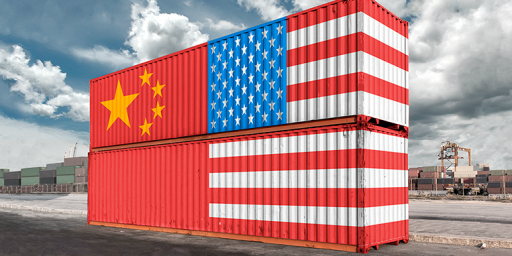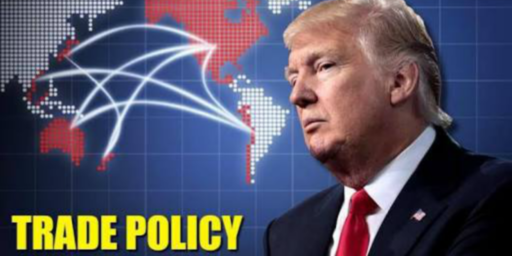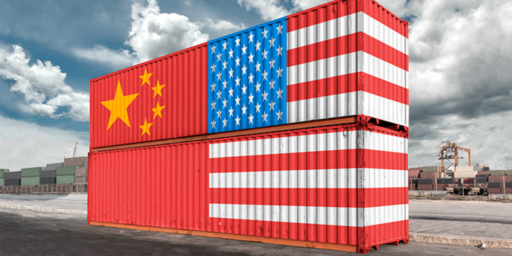Bad Products Not China’s Fault?
Prerna Mankad argues the spate of bad products coming in from China are causing an overreaction from the innumerate. He cites a WSJ piece claiming that many of the defects are actually “the fault of the engineers who designed them and would have been a hazard even if the toys had been manufactured in the U.S.”
While that obviously shouldn't detract from the very real safety issues concerning products ranging from toothpaste to pharmaceuticals, it is important for providing some perspective: It's not always China's fault. Millions of Chinese products are safe, and make our lives easier and cheaper to an incredible degree. Of course it's important to tackle the problems with product-safety regulation in China, but it's equally important that we don't throw the proverbial baby out with the bathwater.
A Wendy Kaufman story on NPR’s “Morning Edition” yesterday of the latest Mattel recall included an interview with an expert who noted that the reason so many of the bad products are coming from China is that the vast majority of products in certain industries are Chinese imports, making it stand to reason that most of the bad ones would come from China, too.
While I remain dubious of the concern for safety of a government that employs slave labor and otherwise treats its people as disposable commodities, these arguments have serious merit. It’s reasonable to have elevated caution about Chinese products at this point. Quite likely, though, we’re going to see Congress overreact by orders of magnitude, both to score political points and to use these recalls as an excuse for regulations that amount to protectionism for more expensive domestic substitutes that are, in reality, no safer.
UPDATE: Dave Schuler points out that cutting corners and shoddy trade practices may be part of the reason Chinese goods have reached their current state of dominance. A reasonable counterpoint.





I’ve been posting regularly (obsessively, some would say) on different aspects of this story since February when the story of the melamine-tainted dog food came out. I agree that Sinophobia plays a part in the coverage and that Congress’s protectionist instincts are misguided (and are unlikely to achieve the results they’re looking for other than getting a few votes from poorly-informed citizens).
However, I think the argument presented by the “expert” that, of course, the majority of bad products in some industries come from China because the majority of good ones in those industries come from China, too, reminds me of the lawyer defending a kid who murdered his parents who appealed for the mercy of the court on the grounds that his client was an orphan. There’s pretty good reason to believe that Chinese dominance in some industries is a consequence of sharp trading practices.
I think we need to strike a balance between singling out the Chinese unfairly and assessing their business practices, social and legal systems, and government trade policies realistically. In particular, I’m not certain how one determines the cost of a product (required to demonstrate dumping) in a society that still resembles a command economy more closely than a market one and in which the currency is as jiggered as the yuan.
BTW I think it’s helpful to deal in specifics rather than in generalities as the FP article does. I agree that the small magnets in toys are bad designs. It might be helpful to check who the engineers were. American, Chinese, or Taiwanese?
DEG in toothpaste, seafood with unsafe levels of antibiotics, lead paint used in toys or baby bibs, and wheat gluten adulterated with melamine are unlikely to be the consequence of design issues.
Ah, Dave’s second comment beat me to it. Engineers are telling them to put antifreeze in cough syrup?
Since I’m actually working as a manufacturer in China, I do have a perspective on this. While Wendy Kaufman’s expert may be right on a statistical level, Dave hits the nail on the head on the cost and corner cutting that happens over here.
Businessmen everywhere, of course, try to reduce costs, and it is in general a good thing, economically speaking. However, over here, it is taken to extremes. I can’t really give a lot of detail because of nondisclosure agreements, but there is a lot of reluctance to part with money over here, even if it saves money in the long run, or increases the quality of the product. Every expat I meet in the manufacturing biz gives a similar story.
One example that I can give is that houses (and, by extension, businesses) are not well-insulated around the doors and windows here. Of course that’s not as severe as ethylene glycol in toothpaste, but when someone won’t spend $100 to save $100 in the first year alone, it gives you an idea of the mentality.
There are two separate situations here which I think should not be conflated. With the lead paint, someone in the manufacturing process was either criminally negligent or committed fraud.
With the magnets, it is likely an oversight of the toy company approval process, and not the manufacturers or the engineers. Unless there is evidence of a manufacturing problem, the toys were manufactured to a design approved of by the American company.
The former problem is something that can be blamed on China. The latter sounds like it is a problem with the toy company itself. Even if an engineer in China designed the toy, the American company should have caught the problem during the approval process.
And just for reference, the problem with the magnets is not quite so obvious. It’s not being small by itself, but that they are small and they are magnets. When swallowed, they can trap a fold of intestine between them.